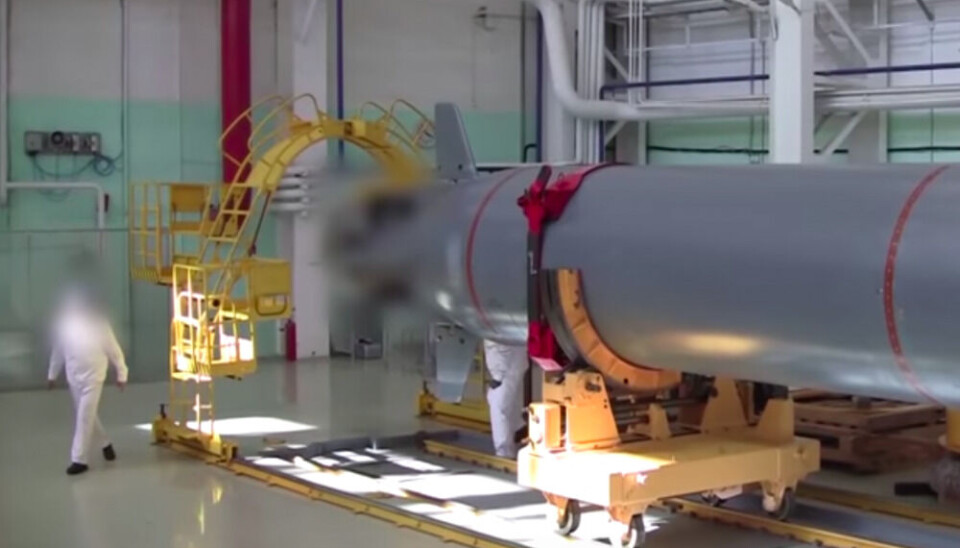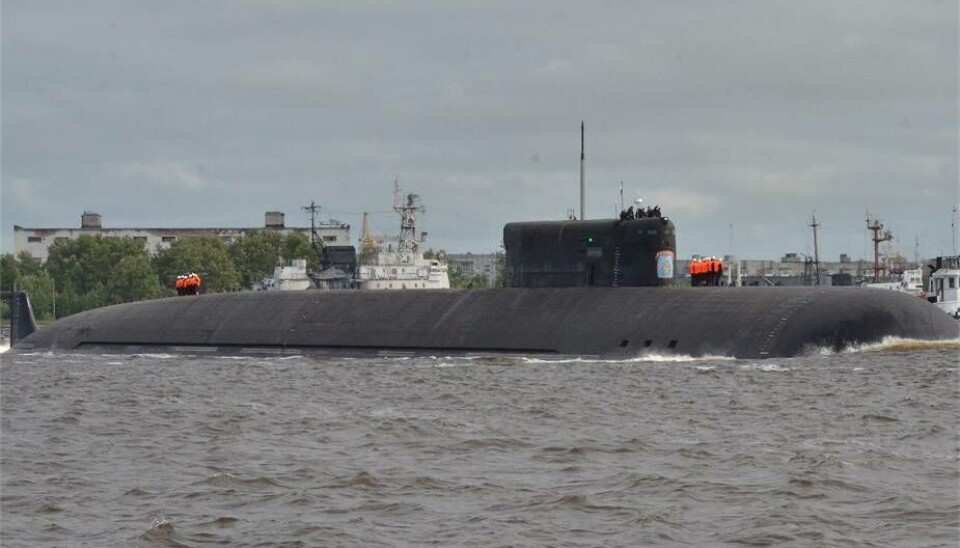
Poseidon nuclear torpedo tested in Arctic waters is primarily a psychological weapon, expert says
A series of throw tests of Poseidon mockups from the special purpose submarine “Belgorod” is completed in the Barents Sea, but fully operative versions are likely years into the future.
According to Russia’s state-run TASS news agency, dummy versions, so-called mockups, of the Poseidon torpedo have been launched at different depths “to clarify the behavior of the submarine.”
The Belgorod is the world’s longest submarine and was handed over to the Navy last July for “experimental operations” with the Northern Fleet.
Poseidon is a post-doomsday weapon unlike ever seen in any previous arms race. Formed like a giant torpedo, the weapon is nuclear-powered, nuclear-armed, and can allegedly travel down deep with intercontinental range.
The Barents Observer first reported about the existence of the weapon back in 2016. Two years later, in 2018, President Putin confirmed that Russia indeed has such a terrifying nuclear weapon system under development.
In the following years, Moscow leaked purposely planted information at regular intervals in media controlled by the state. For the most about different stages of development, testing, maintenance center and what horrific consequences the weapon will cause if ever launched in a nuclear war.
“The project benefits from all the uncertainty and speculation. Poseidon is primarily a psychological weapon,” says Ina Holst-Pedersen Kvam, a researcher with the Norwegian Naval Academy.
She explains how Poseidon has a “third strike” role if a nuclear war ever happens.
“Submarines carrying them are likely tasked with launching the torpedo drones against high-value targets after a large-scale conventional or nuclear war has already been settled, wreaking havoc against an opponent’s coastal cities regardless of who wins,” the Norwegian expert on Russian strategical deterrence thinking and naval doctrines says.

On Monday this week, TASS detailed more on the test program for the Poseidon’s main components, including the small nuclear reactor. The tests were successfully completed according to the source speaking to the news agency.
According to the news agency, the first set of “Poseidon nuclear super-torpedoes are produced.”
“The Belgorod submarine will receive them in the near future,” an unidentified source in the military said.
Ina Holst-Pedersen Kvam states that it is too early to conclude “with any reasonable degree of certainty” about the status of Poseidon’s development progress.

“Employing a dummy version makes sense for several reasons,” she says, explaining how exercises’ objectives can be obtained without requiring live fire.
“Even if technical capabilities and competence aboard the newly commissioned Belgorod have reached sufficient maturity, the General Staff [of Russia’s Armed Forces] may also wish to save available prototypes for signaling and demonstrative purposes further down the line if tensions continue to escalate.”
Holst-Pedersen Kvam believes any potential live fire test likely will come at a time when the potential deterrent effects are needed the most.
“Against the backdrop of Russia’s crumbling conventional campaign in Ukraine, increased nuclear activity in the Barents Sea moving forward is to be expected,” she notes.
“To my knowledge, there are only 30 such torpedoes on order, and they will be very expensive to produce once the design is fully finalized. Initial deliveries are scheduled for 2027 at the earliest, but if the track record of Russia’s infamously underachieving industrial-military complex is any indication, Poseidon will likely reach full operational service much later.”
Tears for fears
For the population in Russia’s northwest regions and neighboring Scandinavia, testing of new reactor-powered weapon systems is scary news.
For good reasons.
Only hours after the mysterious blast in the White Sea in August 2019, municipal authorities in the town of Severodvinsk saw a brief radiation spike across the town. While the Ministry of Defense denied any accidents involving nuclear materials, it soon became clear that a Burevestnik nuclear-powered cruise missile had exploded with five of the participating experts being exposed to high doses of radiation and later died.
“Their life mission was to protect Russia,” Putin told the widows of the killed men shortly afterward.
While prototype versions of the Burevestnik missiles (NATO name Skyfall) have been tested both at Nenoksa and at Novaya Zemlya, it is expected that the Kara- and Barents Seas are waters where the first live tests of Poseidon will take place.
Novaya Zemlya is Russia’s main testing ground for nuclear weapons, nowadays mainly done in the form of sub-critical tests in the tunnels near the Matochkin Strait.
Maximize radioactivity
Live fires are needed to “evaluate the nuclear torpedo’s full damage potential,” says Ina Holst-Pedersen Kvam.
“The two megaton Cobalt warhead is after all designed to maximize radioactivity upon detonation, leaving its surroundings uninhabitable.”
The Norwegian researcher imagines that Moscow will have the Poseidon weapon as a third-strike threat against a superior adversary such as the US and NATO to “enforce earlier negotiations and concessions in order to dictate peace on much better terms and evade expected defeat.”














